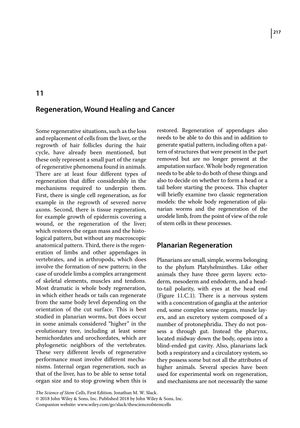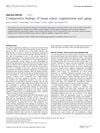Regeneration, Wound Healing, and Cancer
November 2017

TLDR The document concludes that while some organisms can regenerate body parts, mammals generally cannot, and cancer progression is complex, involving mutations rather than a strict stem cell hierarchy.
The document from 2017 explores the mechanisms of regeneration and wound healing in various organisms and their relation to cancer. It details how planarians can regenerate their entire bodies from pluripotent neoblasts, while amphibian limb regeneration involves a blastema of cells with limited pluripotency. It also discusses mammalian wound healing, contrasting it with scarless fetal healing, and the process of bone repair. The document further examines spinal cord injuries, noting the lack of genuine regeneration in the mammalian central nervous system. In the context of cancer, it outlines the progression of the disease through the accumulation of somatic mutations, the role of driver and passenger mutations, and the genetic complexity and heterogeneity of tumors. The concept of cancer stem cells is critically assessed, suggesting that tumor heterogeneity is largely due to mutations rather than a stem cell hierarchy, and that while some cancers may contain stem cells, the "cancer stem cell" model has limitations.





